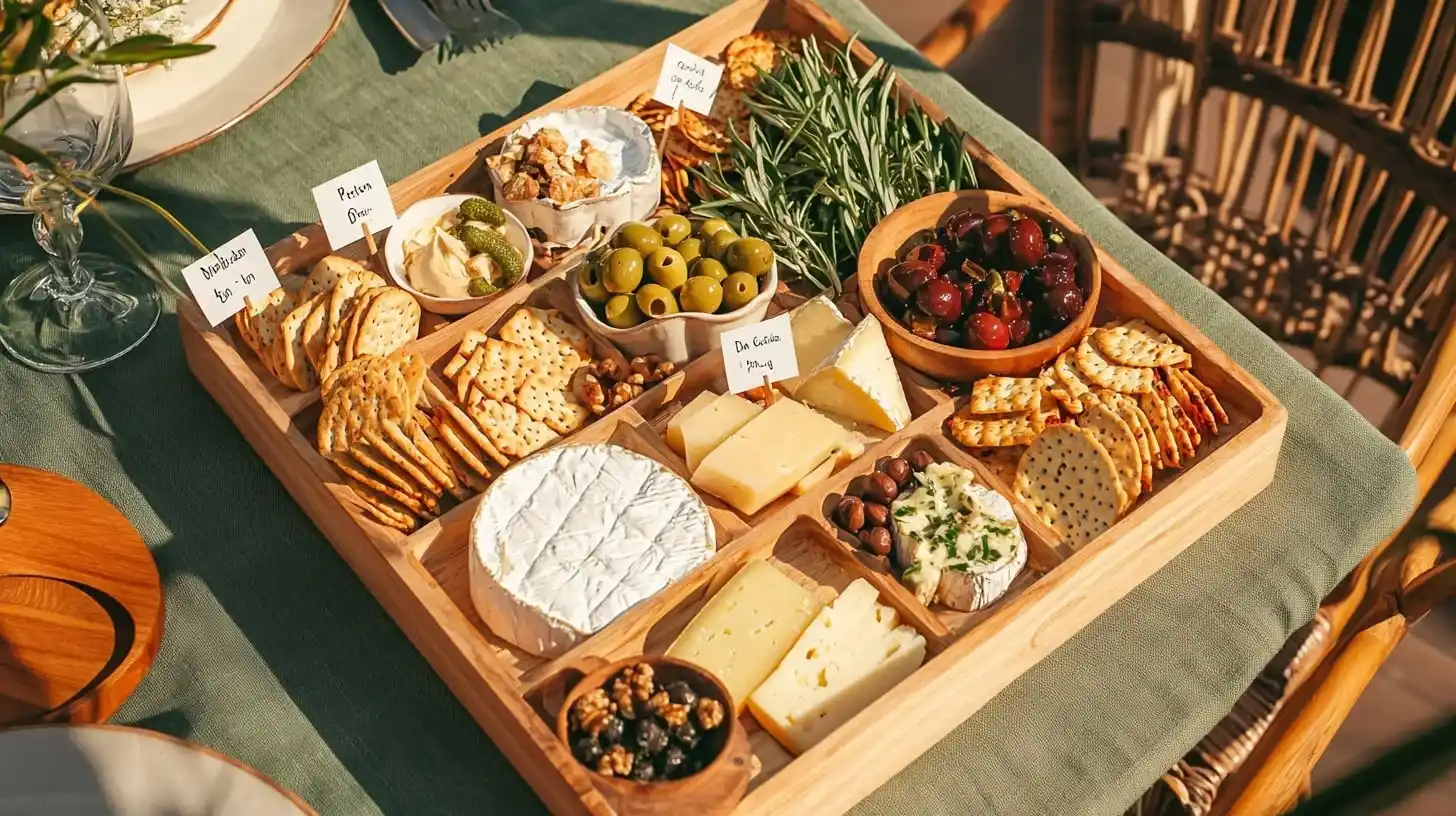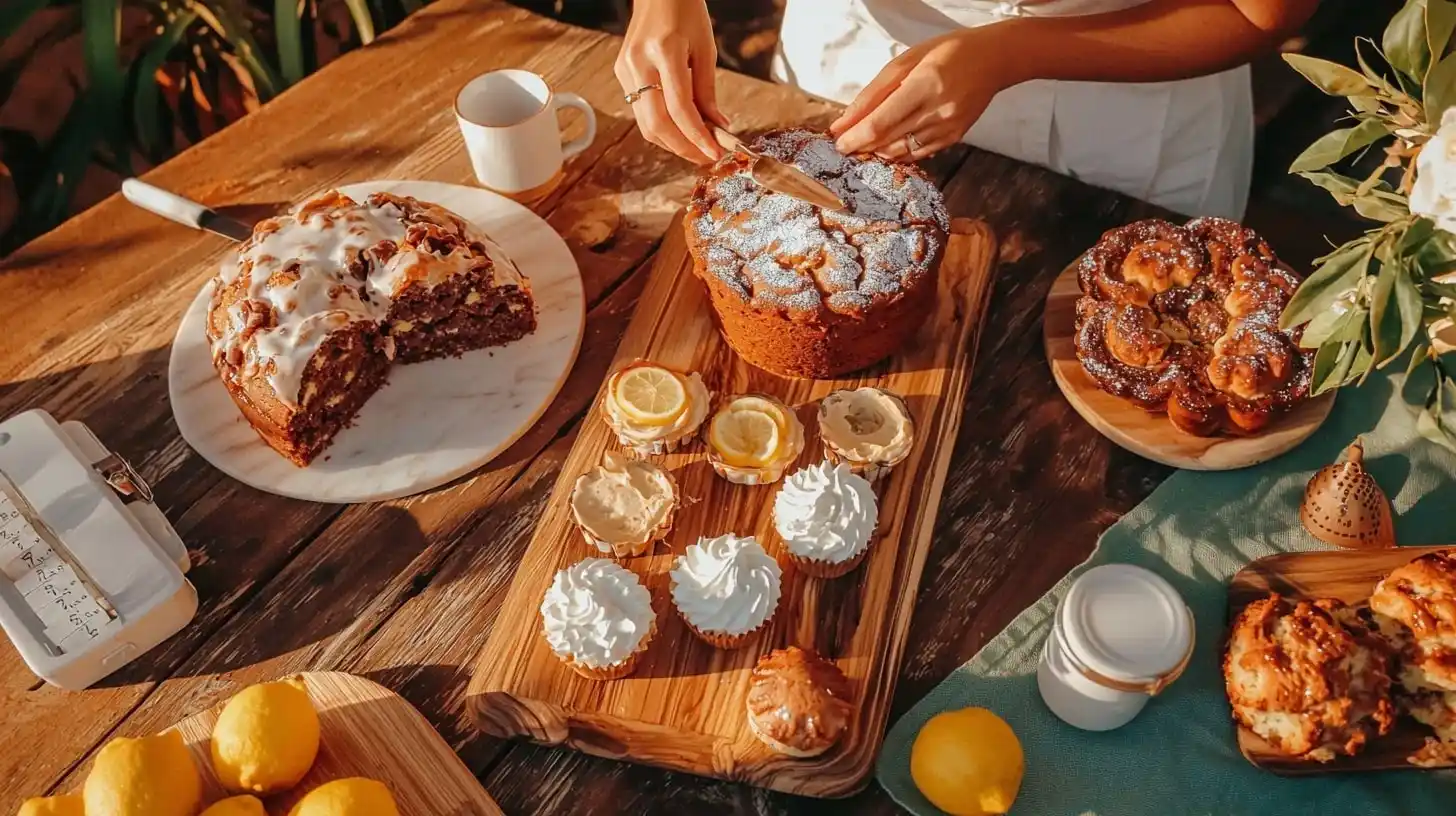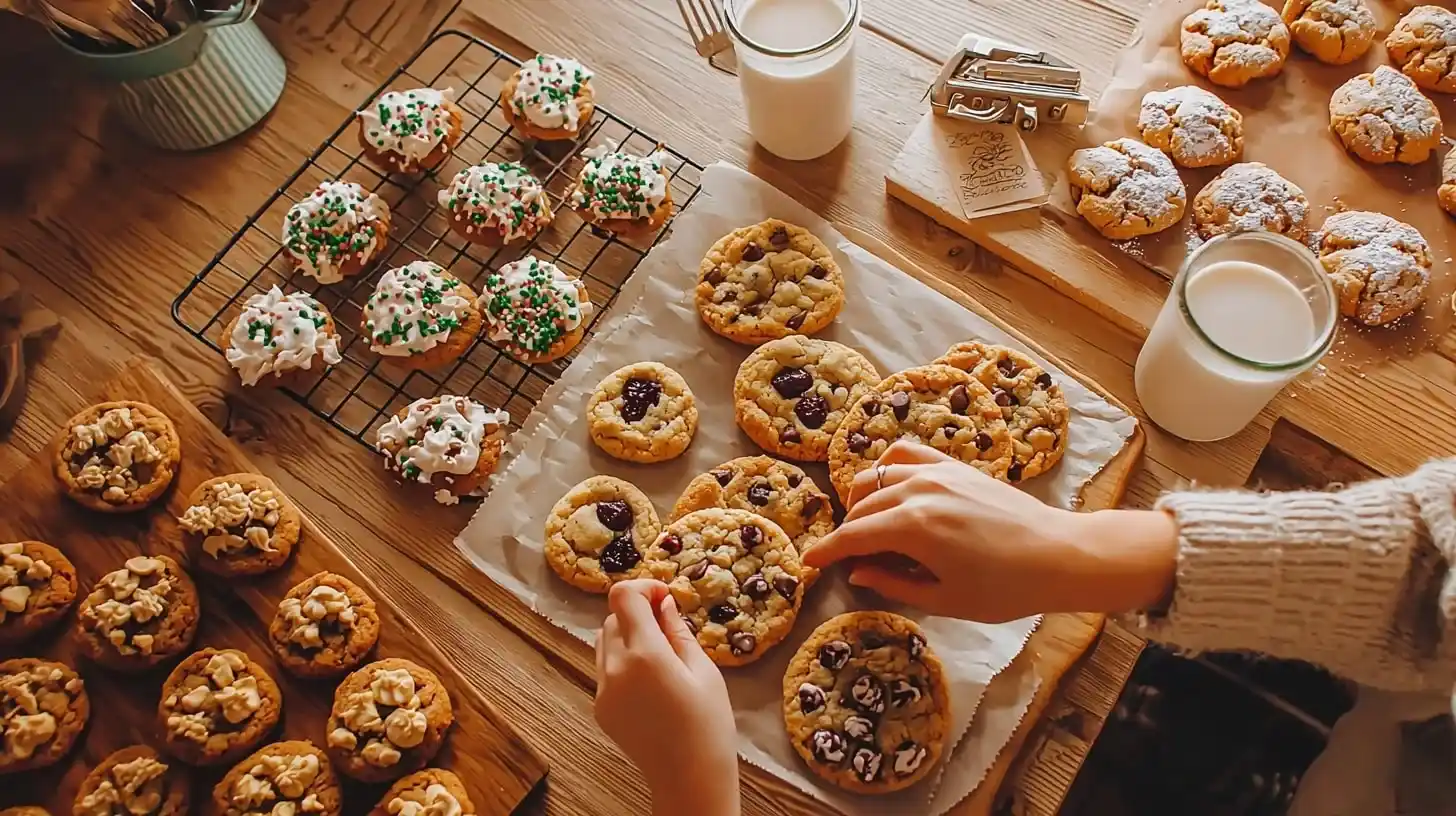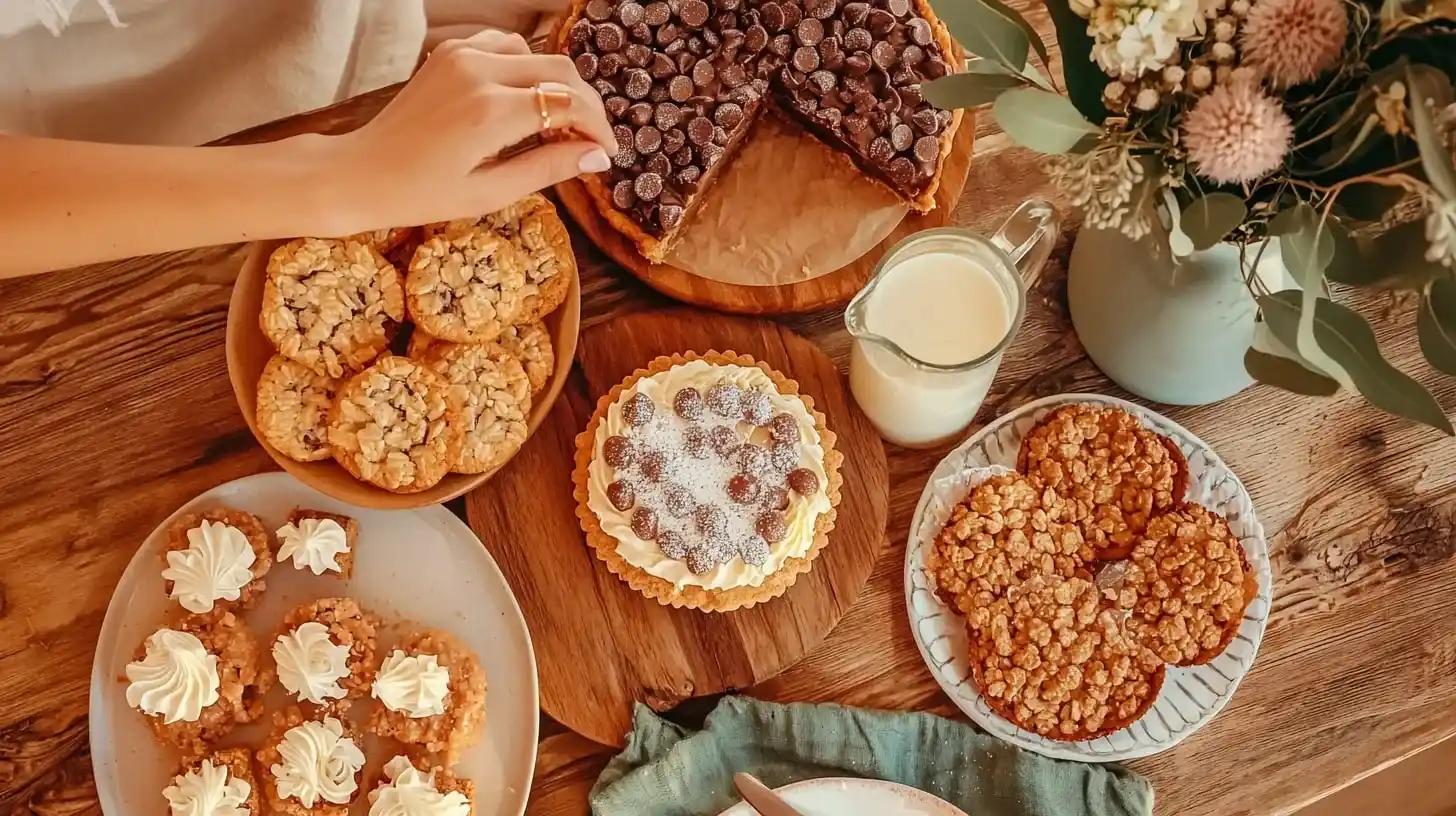“Mom, What Goes on a Cheese and Cracker Tray?” My 9-year-old daughter caught me off guard with this question as I prepared for our neighborhood gathering. She’d been assigned “cheese board duty” for her classroom’s cultural celebration the following week.
Rather than just giving her a list, I saw an opportunity for a hands-on lesson. We pulled out my grandmother’s wooden serving board, and I shared the wisdom passed down from my Kentucky roots – the art of creating a welcoming spread that brings people together.
As we arranged each component together, her eyes lit up with understanding. “It’s like a puzzle where all the pieces taste good together!” she exclaimed. Her observation perfectly captured the essence of what makes a cheese and cracker tray special – the thoughtful combination of complementary elements.
Table of Contents
Why Understanding What Goes on a Cheese and Cracker Tray? Matters
Understanding What Goes on a Cheese and Cracker Tray? helps you create balanced, appealing spreads that delight guests without causing stress for the host.
- What goes on a cheese and cracker tray determines the overall balance of flavors and textures
- Proper components ensure something for everyone’s tastes and dietary needs
- Understanding what goes on a cheese and cracker tray helps with shopping and budgeting
- The right balance creates visual appeal alongside delicious combinations
- Knowledge of what goes on a cheese and cracker tray builds entertaining confidence
If you’re looking to expand your entertaining skills, knowing What Goes on a Cheese and Cracker Tray? is foundational. This knowledge pairs perfectly with our guide to Cheese and Cracker Tray Perfect – Easy Assembly Guide and builds on concepts from our Cozy Breakfast Recipes: Effortless Morning Meals and Sweet & Savory Treats: Special Breakfast Indulgences.
What Goes on a Cheese and Cracker Tray?: The 5 Essential Categories
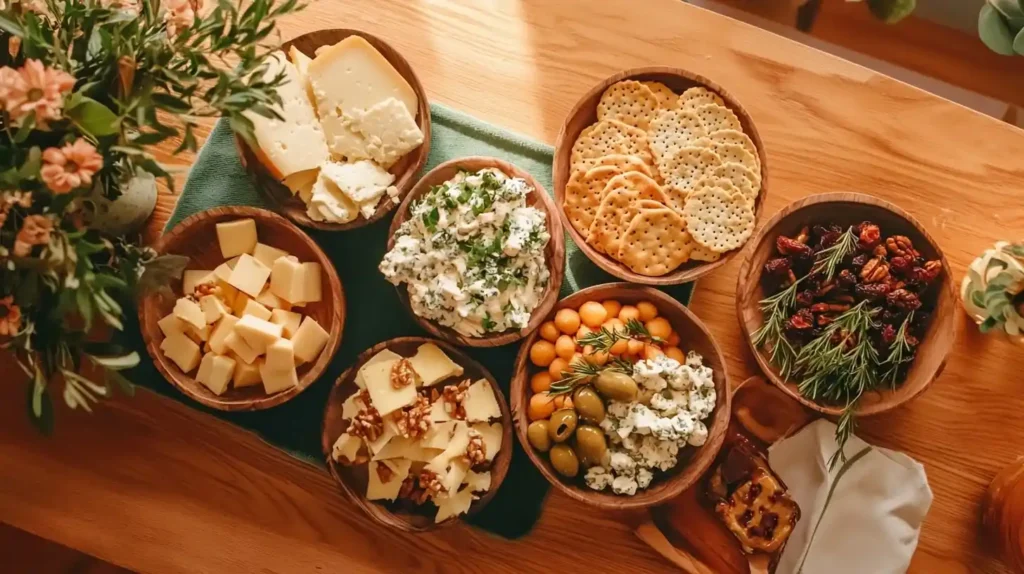
1. Cheese Varieties: The Foundation
The most important component of What Goes on a Cheese and Cracker Tray? is, unsurprisingly, the cheese selection. Aim for 3-5 varieties that offer different textures and flavor intensities.
My grandmother taught me to include at least one from each of these categories when considering what goes on a cheese and cracker tray:
Soft cheese: Brie, Camembert, or goat cheese provide creamy texture. When my daughter first tried Brie, she called it “ice cream cheese” – an apt description of its silky quality!
Medium-firm cheese: Cheddar, Gouda, or Havarti offer familiar, approachable flavors. These crowd-pleasers ensure everyone finds something they enjoy. My son’s preference for “orange cheese only” means cheddar is never missing from our trays.
Aged or bold cheese: Blue cheese, aged Parmesan, or smoked varieties add complexity. During my first attempt at a cheese board, I excluded blue cheese, assuming no one would eat it. My mother-in-law later confessed it was her favorite – teaching me to always include at least one bold option.
The cheese forms the foundation of what goes on a cheese and cracker tray, so quality matters more than quantity. As my Kentucky grandmother wisely noted, “Better to have three excellent cheeses than ten mediocre ones.”
2. Crackers and Breads: The Necessary Vehicles
When determining What Goes on a Cheese and Cracker Tray?, the vessels for enjoying cheese are crucial. Include 2-4 different options:
Neutral crackers: Water crackers or simple varieties that won’t compete with cheese flavors. These humble crackers might seem boring alone, but they allow complex cheese flavors to shine.
Flavored crackers: Rosemary, black pepper, or seeded varieties add interest. My husband’s contribution to what goes on a cheese and cracker tray is always “those fancy crackers” – his term for anything with visible herbs or seeds.
Bread options: Baguette slices, breadsticks, or crostini provide textural contrast. When my budget is tight but company is coming, I make simple crostini by slicing and toasting day-old bread – economical and impressive!
When selecting what goes on a cheese and cracker tray, remember that crackers should complement, not overwhelm, your cheese selections. My practical mother taught me that good-quality crackers make even modest cheese seem more special.
3. Fresh Elements: The Bright Accents
Fresh components are essential when considering What Goes on a Cheese and Cracker Tray?:
Fruits: Grapes, sliced apples, pears, or berries add juicy sweetness. My children’s favorite part of helping arrange what goes on a cheese and cracker tray is creating “grape cascades” that spill artfully over the edges.
Vegetables: Cucumber slices, cherry tomatoes, or blanched asparagus provide crisp contrast. These often-overlooked elements are particularly welcome with richer cheeses.
Fresh herbs: Sprigs of rosemary, thyme, or mint add aroma and visual appeal. My mother’s herb garden inspired me to incorporate these fragrant accents into what goes on a cheese and cracker tray.
These fresh elements bring color, brightness, and palate-cleansing qualities to your spread. They balance the richness of cheese and add visual appeal to what goes on a cheese and cracker tray.
4. Savory Complements: The Flavor Enhancers
The savory elements of What Goes on a Cheese and Cracker Tray? provide depth and complexity:
Nuts: Almonds, walnuts, or pecans add crunch and earthiness. Toasting nuts briefly enhances their flavor – a simple touch that elevates what goes on a cheese and cracker tray.
Olives: Varied colors and flavors create salty, briny notes. My grandmother insisted proper olives always include pits – “They taste better that way” – though I provide a small dish for pits when serving what goes on a cheese and cracker tray.
Charcuterie: Prosciutto, salami, or other cured meats for additional protein. Though optional, these make what goes on a cheese and cracker tray more substantial for heartier appetites.
These savory elements balance the milder components and add sophistication to what goes on a cheese and cracker tray. My brother’s first reaction to an olive-free board I once made was, “Where are the little salty things?” – proving their expected place.
5. Sweet Accents: The Flavor Bridges
Sweet elements complete What Goes on a Cheese and Cracker Tray?:
Honey or jams: Small amounts of sweet spreads create delicious combinations. The honey dripper from my grandmother’s kitchen now serves as both a functional tool and nostalgic element when preparing what goes on a cheese and cracker tray.
Dried fruits: Apricots, figs, or cranberries offer concentrated sweetness. These shelf-stable items are always in my pantry, ensuring I can assemble what goes on a cheese and cracker tray even when fresh fruit is unavailable.
Dark chocolate: Small pieces provide rich contrast with certain cheeses. My daughter discovered the magic of blue cheese with chocolate – an unexpected combination that’s now mandatory when considering what goes on a cheese and cracker tray for our family gatherings.
Answers to Your Questions About Cheese Tray Components
Q: What goes on a cheese and cracker tray that children will actually eat?
When planning What Goes on a Cheese and Cracker Tray? for family-friendly gatherings, include familiar options alongside more adventurous ones. Cubed mild cheddar, plain crackers, grapes, and apple slices create a safe zone for hesitant eaters.
I’ve found that involving children in deciding what goes on a cheese and cracker tray increases their willingness to try new things. My youngest initially refused anything but cheddar until he helped select a “cheese that looks like cake” (Brie) for our board – pride of selection trumped hesitation!
Q: What goes on a cheese and cracker tray that can be prepared in advance?
Many elements of What Goes on a Cheese and Cracker Tray? can be prepared hours or even days ahead. Cheese should be cut, crackers portioned, nuts measured, and olives drained in advance. Store components separately, then assemble just before serving.
Understanding What Goes on a Cheese and Cracker Tray? helps you create memorable gatherings with minimal stress. Like my grandmother’s approach to hospitality, the goal isn’t perfection but creating a welcoming atmosphere where people connect over delicious bites.
For more entertaining inspiration, explore our Sweet & Savory Treats collection, which offers additional ideas for special gatherings.
With warmth, Sophia

